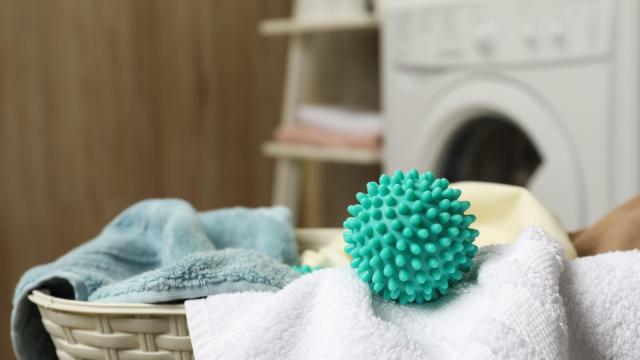Given we’re currently all living at the mercy of spiking inflation and surging gas prices, it’s nice to know there are still a handful of simple ways we can lower on spending on regular household purchase without skimping too much on convenience, if only to give us the illusion we have any control over our financial destinies. By focusing largely on decreased reliance on disposable items, we can save a pretty penny — and reduce our personal plastic waste production in the bargain. Inspired by this TikTok video, I’m outlining a few major categories of everyday items where you can swap out for cheaper — and more sustainable — alternatives.
Swap paper towels for reusable cloths
We’ve written before about how we use an egregious amount of paper towels — according to the U.S. Census data and Simmons National Consumer Survey (NHCS), some 45.3 million Americans use eight or more rolls of paper towels every month. If those eight rolls cost, say $16 a month, that’s nearly $194 for the year (and unless you pay more, they may suck at actually absorbing liquid anyway). Instead of shelling out hundreds over the years for paper you buy with the intent of throwing it in the trash, switch to absorbent reusable cloths, such as flour sack towels. Also consider: old t-shirts.
Swap Ziploc bags for reusable silicone bags
There’s a much cheaper, more eco-friendly way to package all those sandwiches and snacks for road trips, the pool, and kid’s school days: Instead of using a fresh Ziploc bag every time you pack a sandwich, invest in some washable, reusable silicone bags that zip at the top to seal in freshness.
Swap fabric softener for distilled vinegar
Once again, we reiterate that fabric softener is bullshit. Not only does it coat fabrics in a waxy film that provides only the illusion of softness (while also decreasing the fabric’s water-absorption, moisture-wicking capabilities, and flame resistance) we have to pay for our clothes to be degraded. Skip the heavily-scented Snuggle and simply add a quarter cup of baking soda or a half cup of distilled white vinegar directly into your washing machine’s drum during the rinse cycle to achieve softer and brighter clothes. Or simply go without. As someone who has never used fabric softener, I can attest my whole family is fine, and no one has ever complained about “hard” clothes.
Use dryer balls, not dryer sheets
We have also pointed out the fact that dryer sheets suck. Their chemicals and scents have been shown to induce headaches and respiratory difficulties, they leave residue in your machine that can clog the lint filter, and, like fabric softener, they make your clothes and towels less absorbent. Also? They can only be used once (and a heavy load sometimes needs two). Instead, try wool dryer balls, which last for much longer and actually decrease total drying time; aluminium balls to reduce static cling; or again employ the magic of distilled white vinegar (add 1/4 cup in the fabric softener dispenser or to the final rinse cycle).
Swap tinfoil for silicone baking mats and pads
If you want to make a big old messy tray of homemade meatballs, aluminium foil can certainly minimise your cleanup. But so can non-stick silicone baking mats, that can be washed and reused for years. Similarly, when it comes time to store food after meals, instead of using ever more foil, reach for a silicone baking lid.
Swap commercial cleaners for DIY cleaning solutions
Sure you can (and most of us do) buy different cleaning products for every surface and area of the house: the Windex, the kitchen counter spray, the toilet bowl cleaner, the wood cleaner, and the stainless steel cleaner. However, we could save our noses and our wallets some trouble by simply making our own. White distilled vinegar steeped with lemon peels, orange peels or pine needles makes a great all-purpose cleaner; or fill a spray bottle with 2/3 vinegar, 1/3 water and 10 drops of lemon essential oil for your nightly counter spray. You can even make your own glass, brass, and grease cleaners from basic household staples.
Stop buying plastic water bottles
According to EarthDay.org, “Americans purchase about 50 billion water bottles per year, averaging about 13 bottles per month for every person in the U.S. That means by using a reusable water bottle, you could save an average of 156 plastic bottles annually.” Let’s be honest, many bottled water purchases are made on the fly, and cost an average of $2 each. It makes much more sense, financially and environmentally, to kick the disposable water bottle habit and keep a washable, refillable bottle on you at all times.
An added cost-saving bonus is that by reducing your trash in the above-mentioned ways, you’ll also reduce the amount of trash bags you need to buy, offering further savings over time.

Leave a Reply
You must be logged in to post a comment.